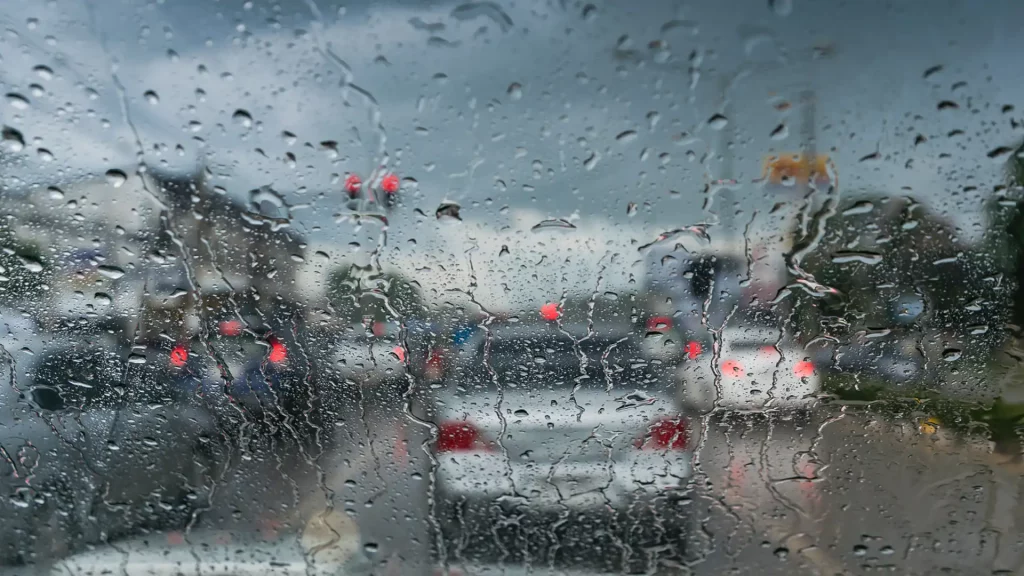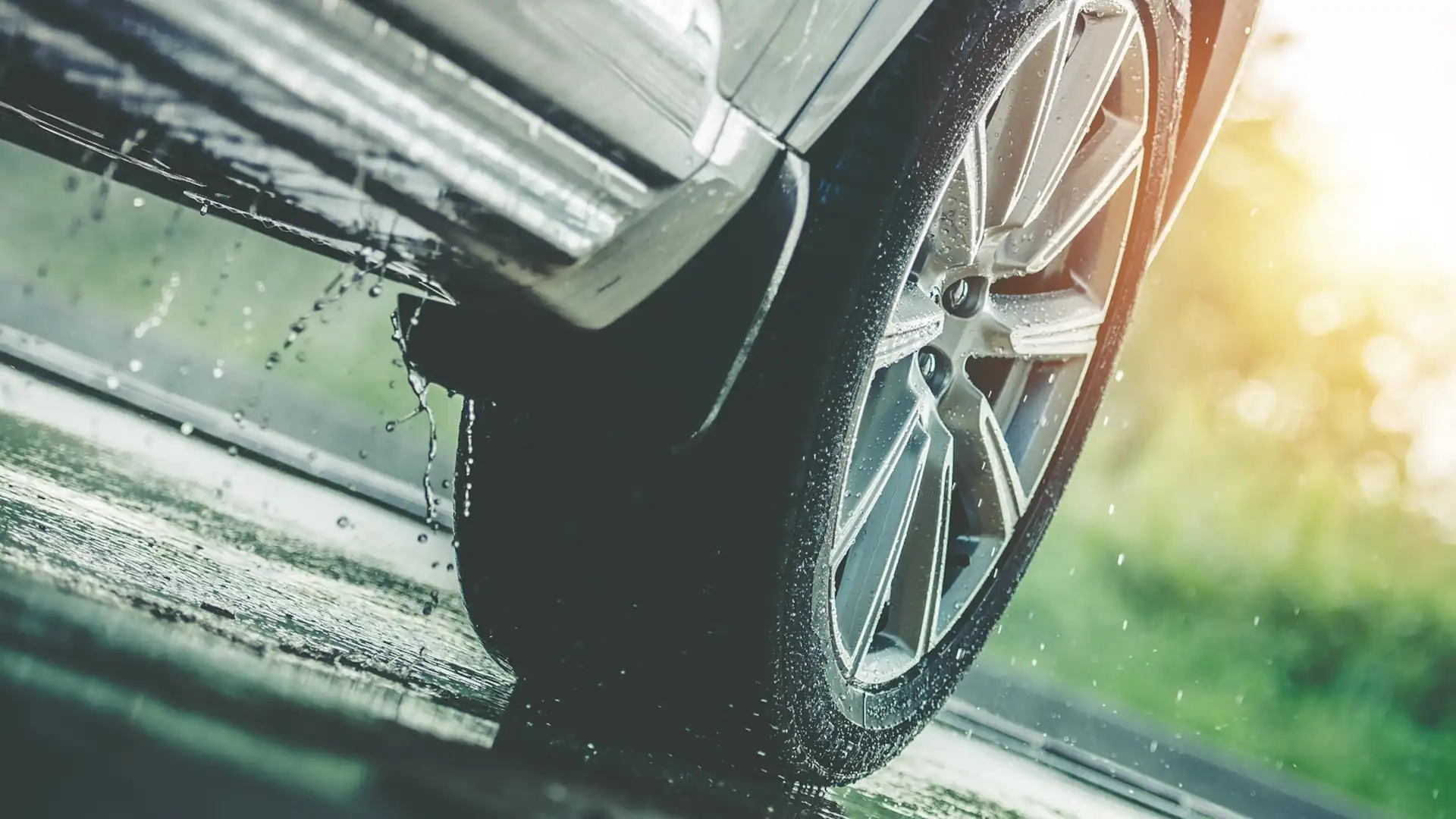New Zealand has one of the highest rates of rainfall in the world, which means that ensuring roads are safe to travel on while wet is one of the most vital parts of civil engineering. Wet conditions create unique circumstances that lead to high accident rates, especially in urban centres or on high-speed roadways. That’s why safety surfacing is so important.
In this article, we’ll explore how wet conditions affect different road surfaces and answer a commonly asked question: what type of road surface is safest in wet conditions?
How Do Wet Conditions Affect Road Surfaces?
During a rainstorm, water creates a thin layer on road surfaces. This reduces the amount of traction between the rubber of tyres and the road’s surface, heavily increasing the chances of skidding or hydroplaning. This is especially true at high speeds or around corners when a car’s tyres have even less traction than usual.
Rainwater can also mix with other contaminants on the road, such as oil, dirt, and debris. This creates an extra-slippery film that makes it even harder for tyres to grip the road’s surface. Depending on the type of road surface, these effects can be better or worse, influencing how safe it is for drivers in certain areas while it’s raining.
It’s a common misconception that every road in Aotearoa is made with the same materials. Roads, motorways, pedestrian crossings, cycle lanes, bus lanes, and more can all be made using different materials or blends depending on how tough they need to be or how long they need to last. Unfortunately, some surfaces are more vulnerable to wet conditions than others.
Let’s review how some of the most common road surfaces in New Zealand respond to wet conditions.

Asphalt
Asphalt is excellent at providing traction in dry conditions. In wet conditions, it can become slippery, especially if it hasn’t been maintained in a while. Over time, the top layer of the road wears down, and other things can accumulate there instead. When it rains, and the water mixes with these contaminants, the top layer of asphalt becomes slippery and presents a major danger to drivers.
Concrete
Concrete surfaces are generally prized for their durability, which made them a popular choice back in the day. However, due to difficulties with maintaining concrete roads, they’re not commonly used in places where water, gas, or sewer lines are running beneath roadways in New Zealand.
They’re also a lot more expensive. That said, there are still roads or highways made with concrete from when they were more common, usually asphaltic concrete. There is also plenty of concrete paving in urban centres to enhance New Zealand’s roading. These roads need to be regularly re-sealed to re-establish a high-grip surface.
Gravel
There are many unsealed gravel roads across New Zealand, especially in more rural areas. They’re fantastic for reducing water accumulation, as water can easily drain through the road and off into the surrounding grass banks. That said, gravel is known for being loose and shifting easily under the weight of vehicles, especially in heavy rain, which can lead to unstable driving conditions. Many gravel or unsealed roads are being replaced with traditionally sealed roads for this very reason.
Across the board, these roads can degrade over time, reducing traction and dangerous driving in wet conditions… but there’s a way forward.
The Ultimate Solution: Safety Surfacing with Resin
Anti-skid road surfaces like resin surfacing are a specialised road treatment provided by TSL for traction in vital parts of New Zealand roadways, especially in wet conditions. Resin is mixed with aggregate materials and applied to the road surface, adhering firmly as it dries. The rough texture provided by the aggregates makes it easier for car tyres to grip the surface, while the resin plastic surfacing increases skid resistance.
What are the Advantages of Anti-Skid Surfaces?
Safety surfacing like this is typically done in areas where maintaining high traction is very important, like motorway off-ramps, pedestrian crossings, sharp bends, and areas with high crash rates. The resin can even be applied in bright colours, giving drivers and pedestrians a visual cue that they need to slow down and be more careful (especially in the rain). Resin pathways and driveways are also becoming more common, especially in school areas or urban centres.
There are various benefits of installing anti-skid road surfaces like these. From the crew at TSL, here are our top three:
- Enhanced safety: Resin surfacing improves traction in wet conditions. The rough texture prevents skidding and heavily reduces the risk of accidents.
- Extremely durable: These surfaces are typically installed in high-traffic areas, as they’re excellent at withstanding heavy loads or harsh weather conditions.
- Visually impactful: Using colourful plastics and resin can enhance safety by creating a visual signal for drivers, encouraging them to slow down and be more careful in high-collision areas.
Ultimately, adding resin-bonded safety surfaces can vastly increase road safety in wet conditions. From motorway off-ramps to pedestrian crossings across the city, these surfaces increase skid resistance in the rain while increasing both pedestrian and vehicle safety.
Contact Our Safety Surfacing Specialists Today.
As an expert in civil construction, Traffic Systems Limited has been providing safety surfacing and resin surfacing civil works for years. Provide greater control and security to Auckland motorists, cyclists, and pedestrians by partnering with our safety surfacing team. Talk to us today.


